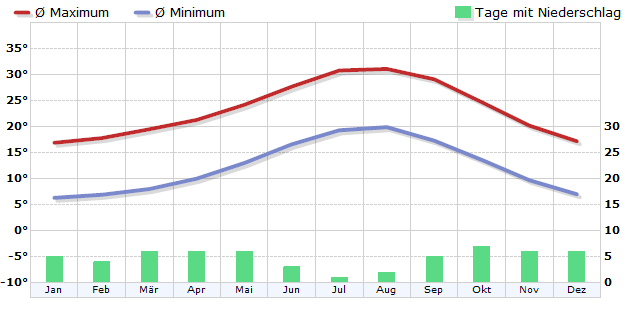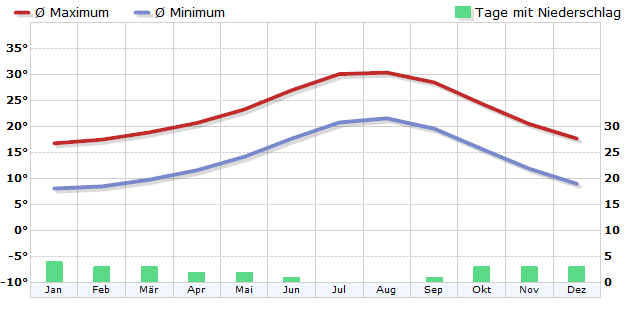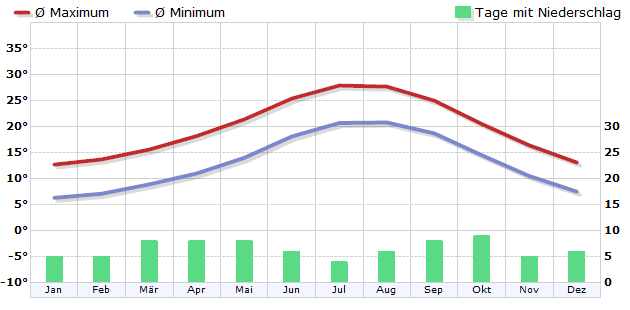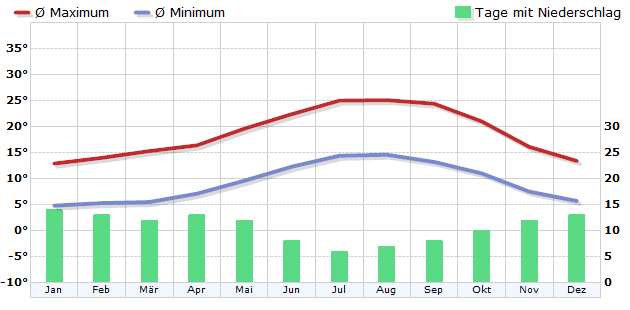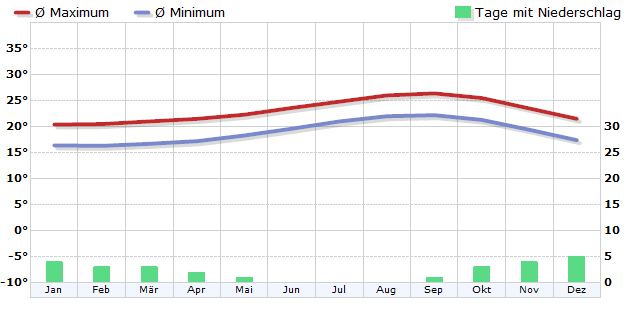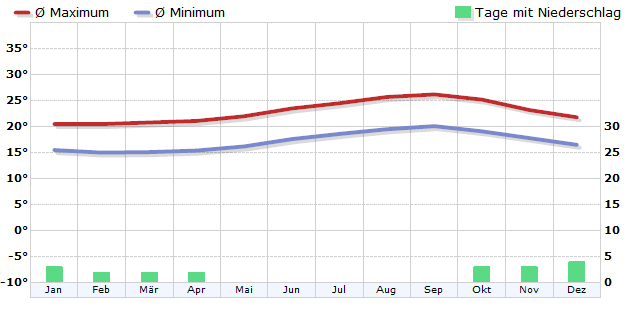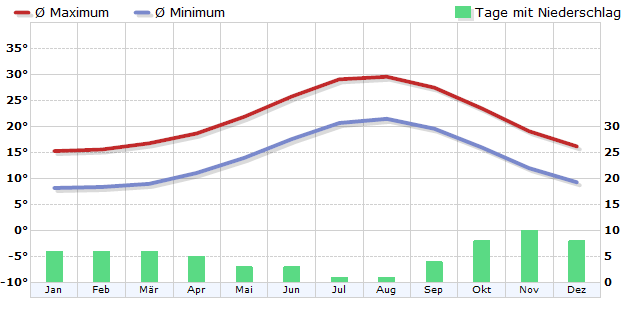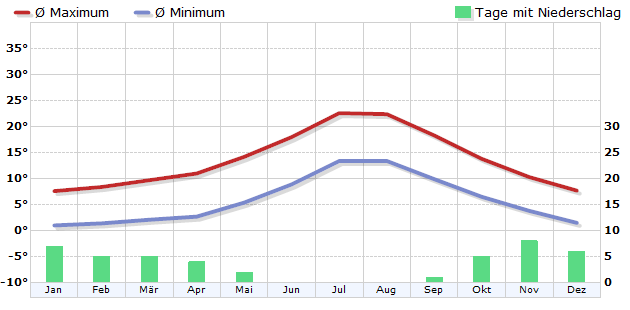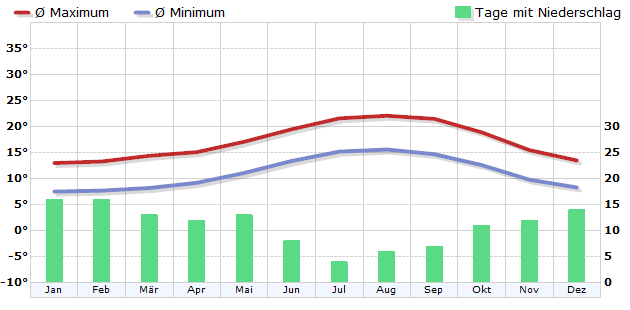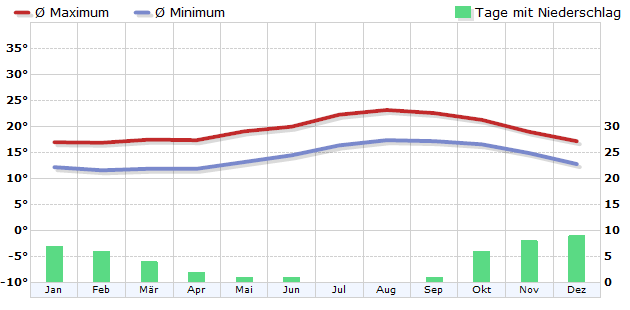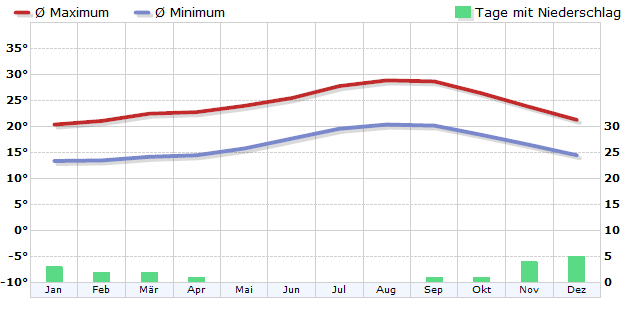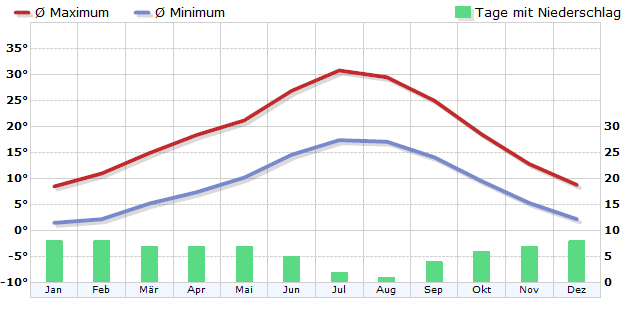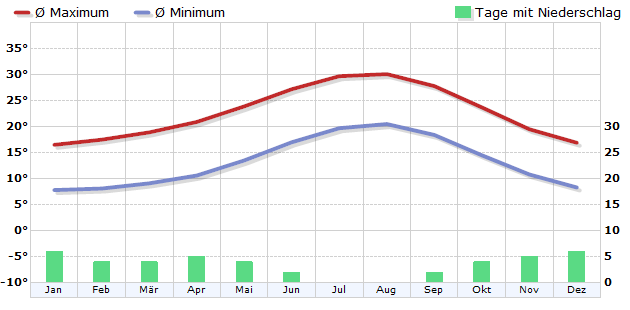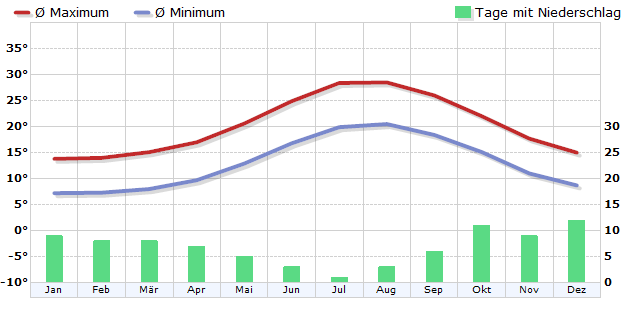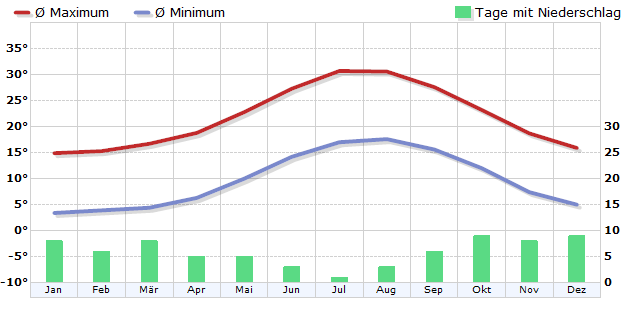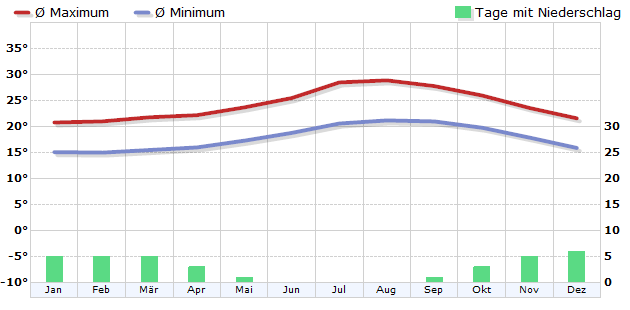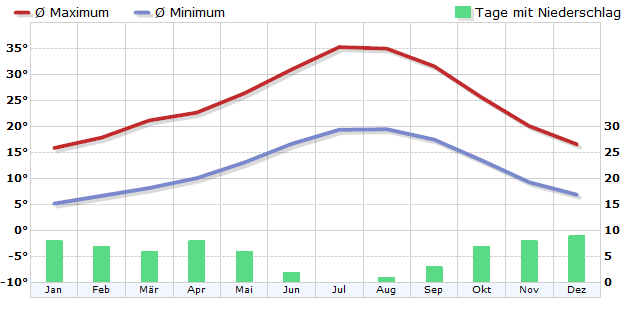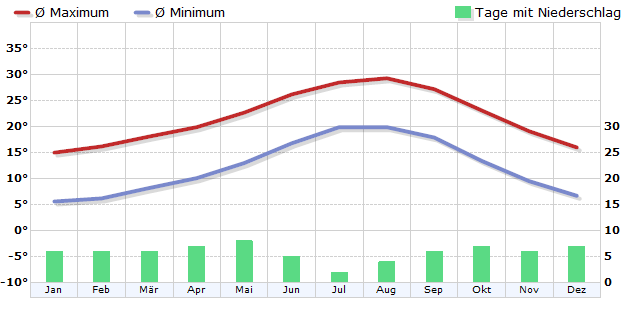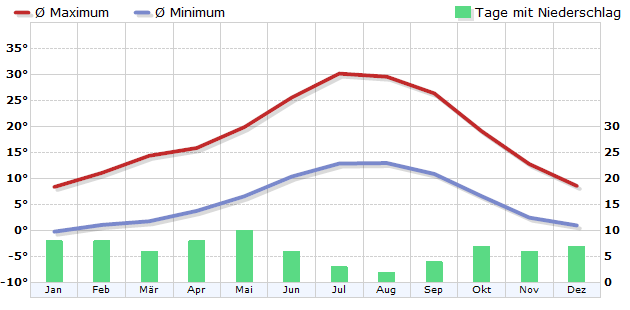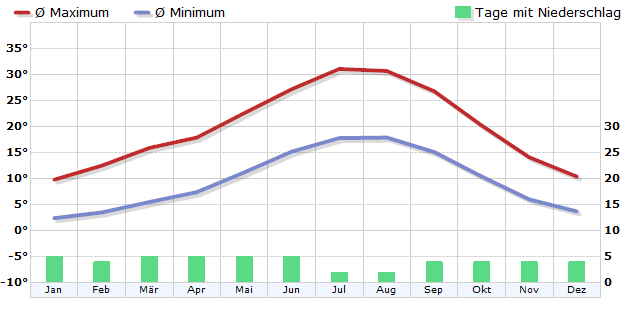Climate Spain
Due to its location on the Atlantic, the Mediterranean and the mountains, Spain has different climates. In the mountains there is a rough mountain climate with cold and snowy winters and cool summers. On the Atlantic Ocean the climate is oceanic. Here, with partly more than 1500 mm per square meter, the largest amounts of precipitation of the country fall. In the summer it remains rather cool, in the winter mild. In central Spain the climate is much more continental. There the temperature differences between summer and winter are greater. In the north of central Spain, large quantities of snow can fall in the cold winters. In summer, however, it is usually very warm and dry. Further south, the Mediterranean climate is becoming more and more prevalent. Especially on the Mediterranean coast and the Balearic Islands the winters are very mild and in the summers the average maximum temperatures are around 30 degrees. The largest amounts of precipitation fall in autumn. The climate on the Canary Islands has a special position. It is subtropical with pleasantly warm temperatures throughout the year. Even in winter, the maximum temperatures hardly drop below 20 degrees. In the summer months June to August there is almost no precipitation.
On the Spanish mainland and on the Balearic Islands, the months of May to October are recommended for bathing holidays. On the Canary Islands you can also enjoy the sun in winter. Due to the partly hot summer temperatures, city trips should be better planned in spring or autumn. In autumn, however, a greater probability of precipitation is to be expected. From December to the beginning of April skiing is also possible in the mountains.
Destinations
- Alicante
- Almeria, Andalusia
- Barcelona
- Bilbao, Baskenland
- Córdoba, Andalusia
- Fuerteventura
- Gando / Gran Canaria
- Hierro, Canary Islands
- Ibiza
- Izaña / Teneriffa
- La Coruña (A Coruña), Galicia
- La Palma, Kanarische Inseln
- Lanzarote
- Madrid, Castile
- Málaga , Andalusia
- Menorca
- Murcia
- Palma de Mallorca
- San Sebastian
- Santa Cruz de Tenerife
- Sevilla
- Valencia
- Valladolid, Castile
- Zaragoza, Aragon

